The Lantern Festival, also called the Shangyuan Festival or Yuan Xiao Jie, is a traditional Chinese festival celebrated on the 15th day of the first month in the lunar Chinese calendar, marking the final day of the Chinese New Year celebrations.
This festival dates back over 2,000 years and is rooted in various legends and customs. It involves the lighting and admiring of lanterns while symbolising the reunion of families and the social bond within communities. Traditionally, lanterns of all sizes and shapes are displayed, illuminating towns and cities. The festival also includes a variety of activities such as lion and dragon dances, walking on stilts, riddle-solving games attached to lanterns, and eating tangyuan, which are sweet rice balls that represent family unity and happiness.
The Lantern Festival is a time of joy and festivity, reflecting the rich cultural heritage and traditional values of the Chinese people. It celebrates the transition from darkness to light, embodying the pursuit of a bright and prosperous future.

History of the Lantern Festival
With origins tracing back to the Han Dynasty (206 BCE – 220 CE), the Lantern Festival is a vibrant celebration deeply rooted in Chinese culture. Its inception is linked to Buddhist monks lighting lanterns in honour of the Buddha, a practice that Emperor Ming of the Han dynasty expanded by mandating the lighting of lanterns in households, temples, and the imperial palace.
This festival has evolved over millennia, incorporating various legends and customs. Among these tales is the story of the Jade Emperor, who, in anger over the killing of his goose, planned to destroy a town with fire, only to be tricked by the townsfolk’s lanterns, mistaking their glow for the town’s destruction.
Other legends include worship of the deity Taiyi, believed to control the human world’s destiny, and the tale of Yuan-Xiao, a palace maid whose desire to reunite with her family led to the tradition of eating tangyuan (sweet dumplings) and the widespread use of lanterns to deceive a celestial being into sparing the city from fire.
The festival also honours deities such as Tianguan, the Taoist god of fortune, and has ties to Taoism and various folk customs celebrating light over darkness, family reunion, and societal harmony.
Through the ages, from the Tang Dynasty to the modern era, the Lantern Festival has remained a significant cultural event, symbolising good fortune, familial unity, and the joyous welcoming of spring, celebrated not just in China but by millions worldwide.
Celebrations Across Asia
The Lantern Festival is celebrated with distinct traditions and customs throughout Asia, reflecting the rich cultural diversity of the region. Here’s a glimpse into how different countries embrace this luminous festival:
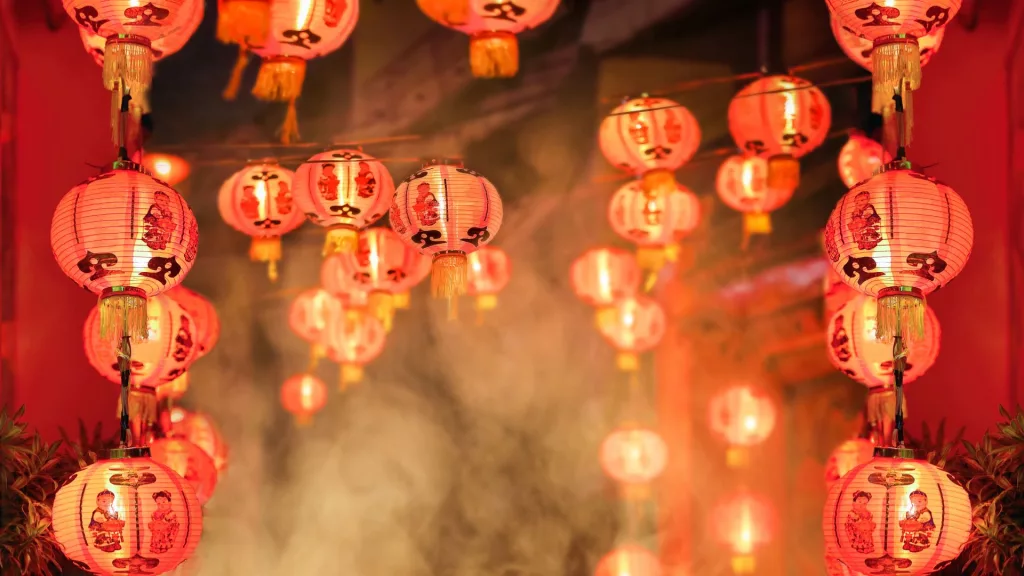
China: Lantern Displays and Riddle Solving
In China, the Lantern Festival is an explosion of light and colour, with lantern displays ranging from traditional paper lanterns to elaborate floats and sculptures illuminated by LEDs. Cities across the country host lantern fairs, where families gather to admire the craftsmanship and creativity of the lanterns. A unique tradition is the solving of lantern riddles – puzzles written on lanterns or slips of paper attached to them, offering a playful way for festival-goers to engage with the celebrations. The festival is also associated with eating tangyuan, sweet glutinous rice balls symbolising family unity and happiness.
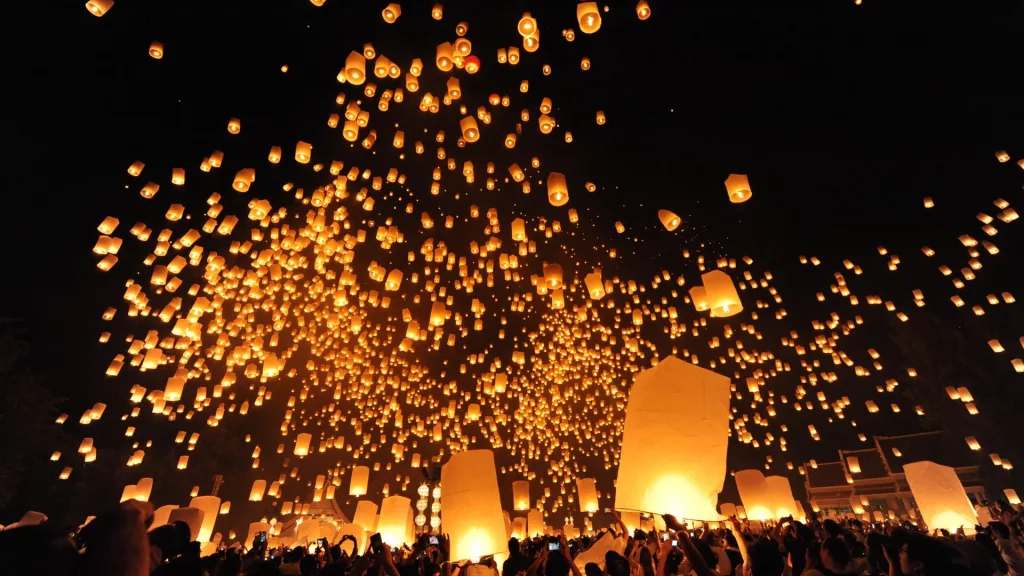
Thailand: Yi Peng Festival
In Thailand, the Lantern Festival is celebrated as Yi Peng (or Yee Peng) in the northern regions, particularly in Chiang Mai. It coincides with the full moon of the twelfth lunar month, usually in November, slightly later than the traditional Lantern Festival. Yi Peng is famous for its breathtaking sky lantern release, where thousands of paper lanterns are lit and released into the night sky, creating a mesmerising spectacle of floating lights. This act is believed to rid the participants of misfortunes and bad luck, symbolising the letting go of ills and miseries. The festival also features parades, traditional Lanna (northern Thai) dance performances, and the decoration of houses and temples with colourful lanterns, adding to the city’s vibrant festivities.
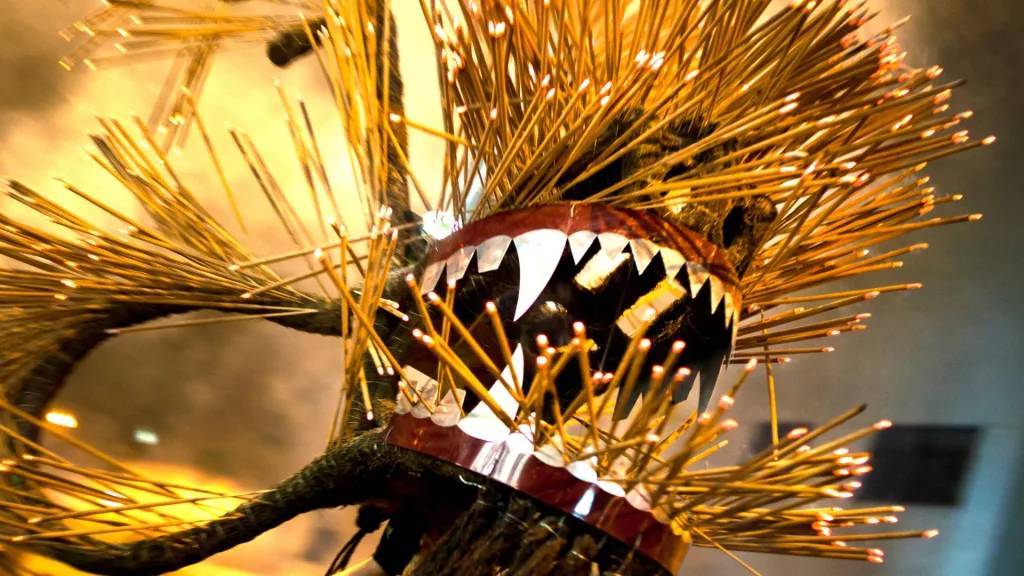
Hong Kong: Tai Hang Fire Dragon Dance
Hong Kong celebrates the Lantern Festival with a unique tradition that dates back over a century – the Tai Hang Fire Dragon Dance. The story goes that the people of Tai Hang village in the 19th century paraded a fire dragon through the streets to ward off a plague, and the tradition has persisted ever since. The dragon, which can be over 67 meters long, is made of straw and covered in incense sticks, which are lit at night, creating a spectacular fire dragon weaving through the streets of Tai Hang. The event draws thousands of spectators and is complemented by lantern exhibitions, traditional food stalls, and cultural performances, showcasing the vibrant and diverse nature of Hong Kong’s celebrations.
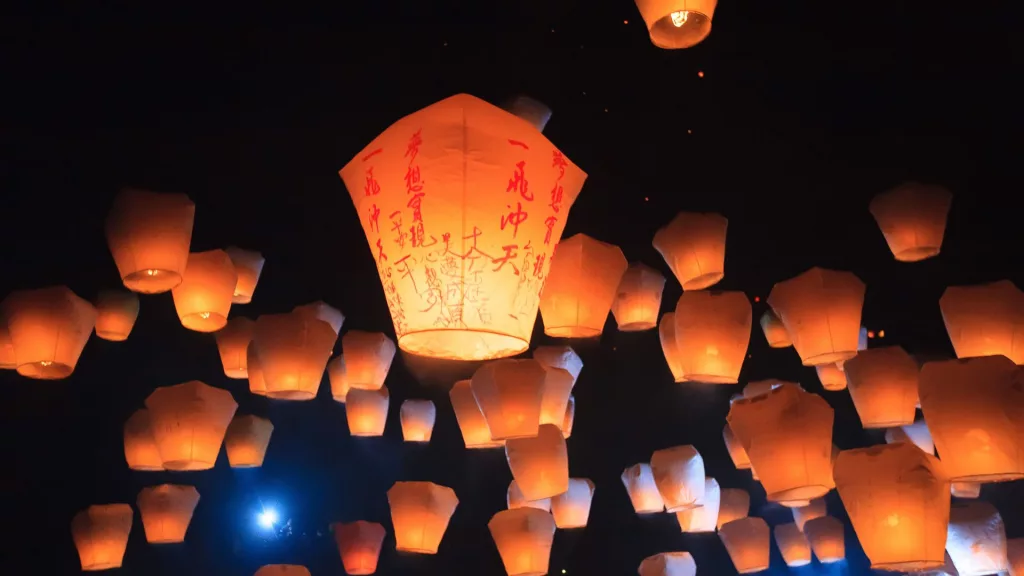
Taiwan: Pingxi Sky Lantern Festival
Taiwan’s Pingxi district hosts one of the world’s most famous Lantern Festival celebrations, the Pingxi Sky Lantern Festival. Here, thousands of sky lanterns, inscribed with people’s wishes and hopes for the new year, are released into the night sky, creating a breathtaking spectacle. The tradition, originating from the need to signal safety to distant relatives and friends during turbulent times, has become a symbol of peace and good fortune. The festival also features traditional food, games, and performances, making it a vibrant and memorable experience for all who attend.
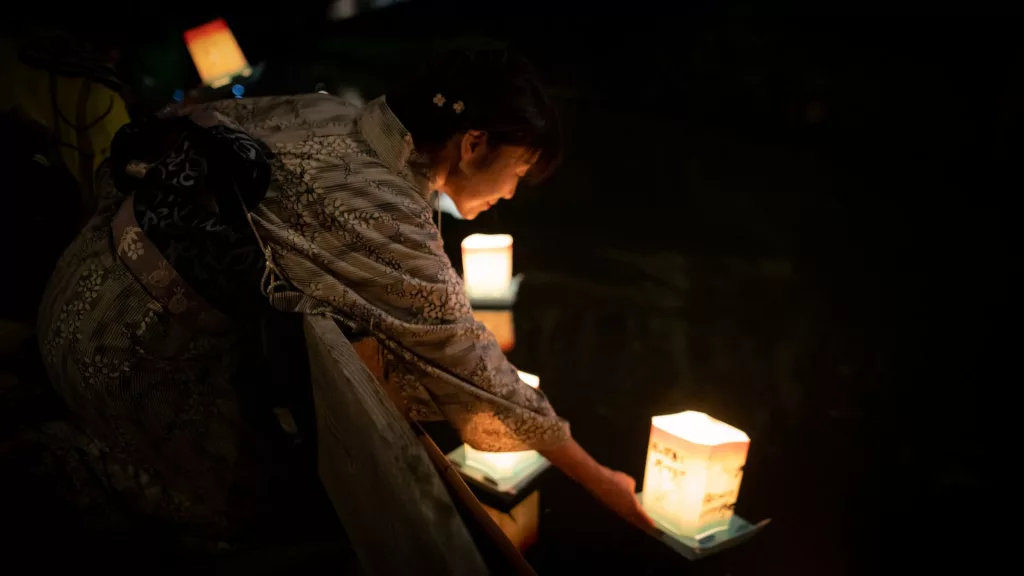
Japan: Toro Nagashi
Japan celebrates the Lantern Festival differently, with one of the most poignant celebrations being Toro Nagashi, or the floating lantern ceremony. This event typically occurs in the summer during the Obon Festival, a period for honouring the spirits of ancestors. Participants write messages to their departed loved ones on paper lanterns, which are then gently set afloat on rivers, lakes, or the sea. The sight of lanterns drifting on the water, guiding spirits back to the other world, is both beautiful and sombre, reflecting the Japanese cultural emphasis on the cycle of life and death.

Malaysia & Singapore: Lantern Parades and Mooncake Tastings
In Malaysia and Singapore, the Lantern Festival is celebrated with much joy and enthusiasm, marking the end of the Chinese New Year celebrations. Communities come together for lantern parades, where children carry brightly lit lanterns through the streets, accompanied by lion and dragon dances. The festival is also a time for mooncake tastings, where families and friends share mooncakes, a traditional Chinese pastry filled with lotus seed paste and egg yolk, symbolising the full moon and completeness. These celebrations are a testament to the multicultural tapestry of Malaysia and Singapore, blending traditions from various ethnic groups into a vibrant cultural festivity.
The Significance of Lanterns in Asian Culture
Lanterns in Asian culture as symbols of hope, prosperity, and the triumph of light over darkness. These lanterns vary in shapes and colours signifying good fortune and strength, representing unity and the gathering of communities.
As the festival has evolved, incorporating modern technology like LEDs and themes of environmental consciousness, the traditional symbolism of lanterns has adapted to reflect contemporary values while retaining its historical essence. This fusion of past and present in the Lantern Festival underscores the enduring relevance of cultural traditions, offering a moment of collective joy and personal reflection on the universal human yearning for a brighter future.
Festive Foods
The Lantern Festival is not just a visual feast but also a culinary delight, accompanied by a plethora of activities that engage communities and foster cultural exchange. One of the hallmark treats of the Lantern Festival is tangyuan in China, sweet glutinous rice balls filled with black sesame or red bean paste. In Taiwan, a similar delicacy known as yuanxiao is enjoyed, with the preparation method differing slightly in the shaping of the balls.

Beyond these sweet delicacies, the festival is an opportunity to savour various traditional foods. In countries like Malaysia and Singapore, the festival sees an array of mooncakes, with intricate designs and diverse fillings, from lotus paste to mixed nuts, symbolising the full moon and prosperity. Meanwhile, in Japan, the celebration is often marked with dango, skewered rice dumplings, offering a simple yet profound taste of tradition.
A Reflection on the Lantern Festival’s Universal Appeal
In embracing the traditions of the Lantern Festival, we’re invited to reflect on the universal themes of unity and the passage of time, regardless of our geographical location. As the lights of the lanterns float up into the night sky or bob gently on the water’s surface, the Lantern Festival reminds us of the beauty of tradition, the importance of cultural preservation, and the joy that comes from partaking in a celebration that has captivated hearts for centuries.
We hope this exploration of the Lantern Festival inspires you to discover more about this enchanting celebration and perhaps experience a festival firsthand in a country that celebrates it.




